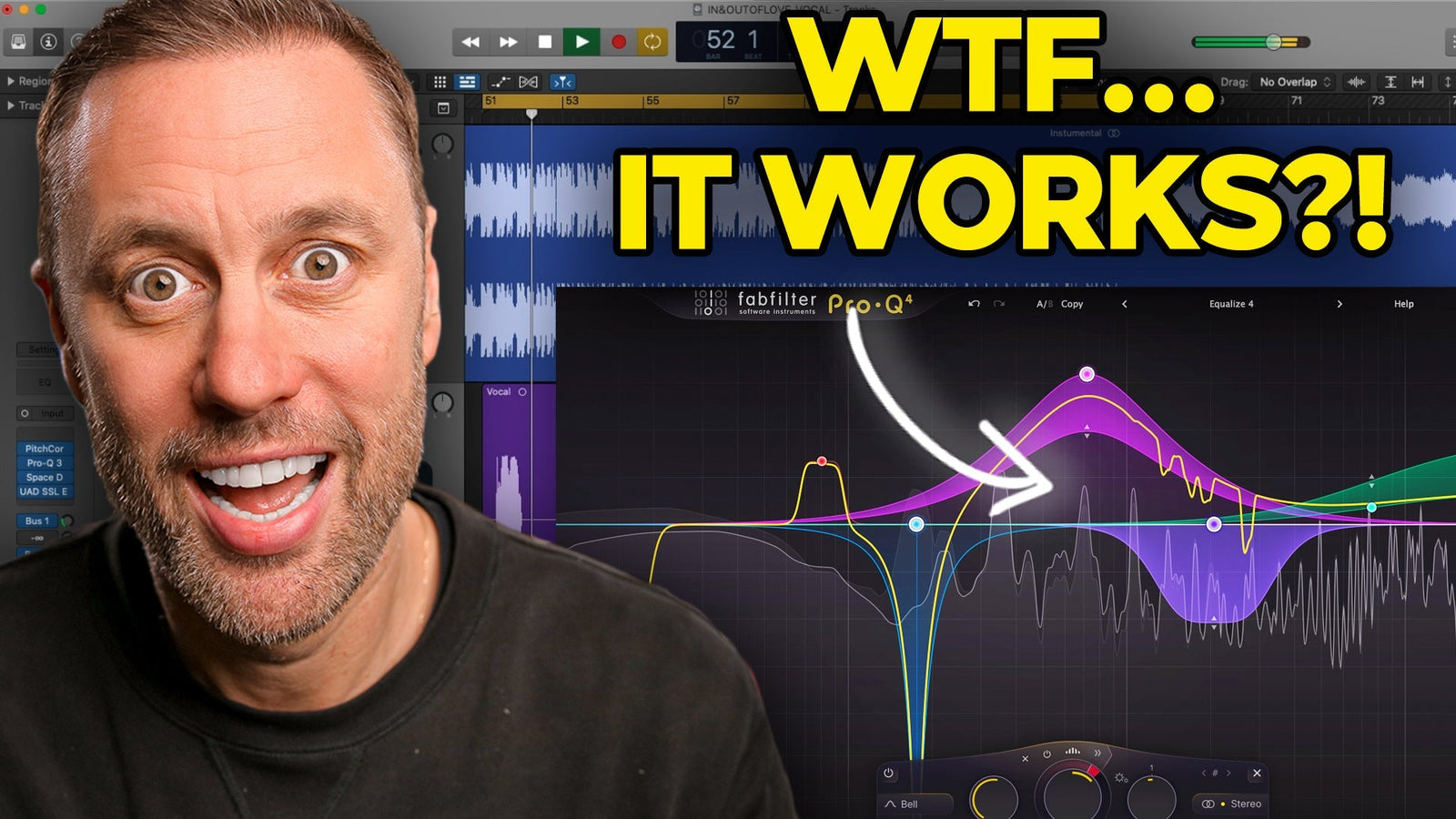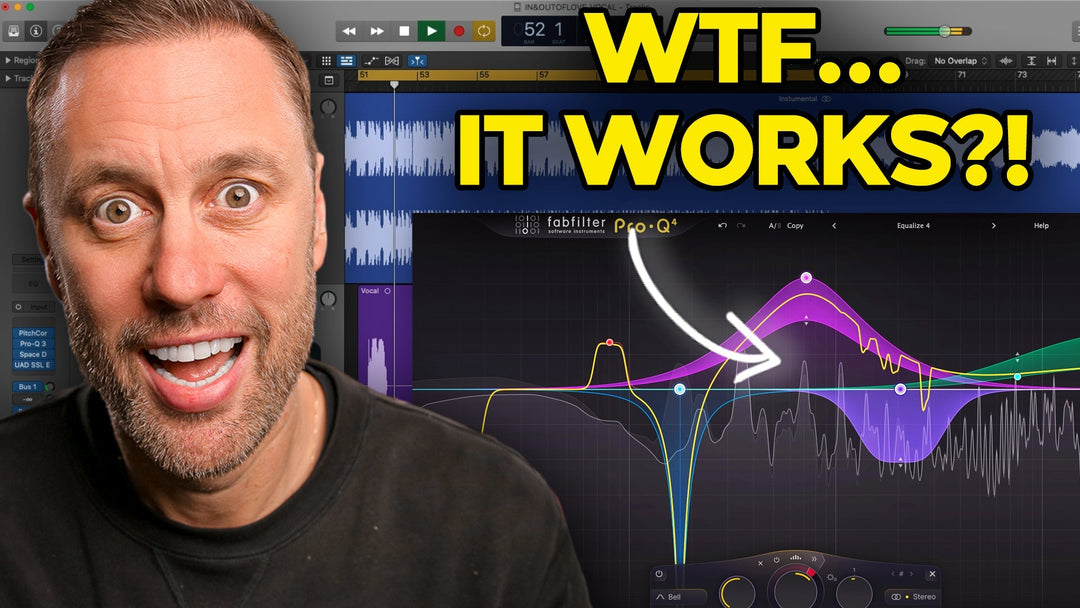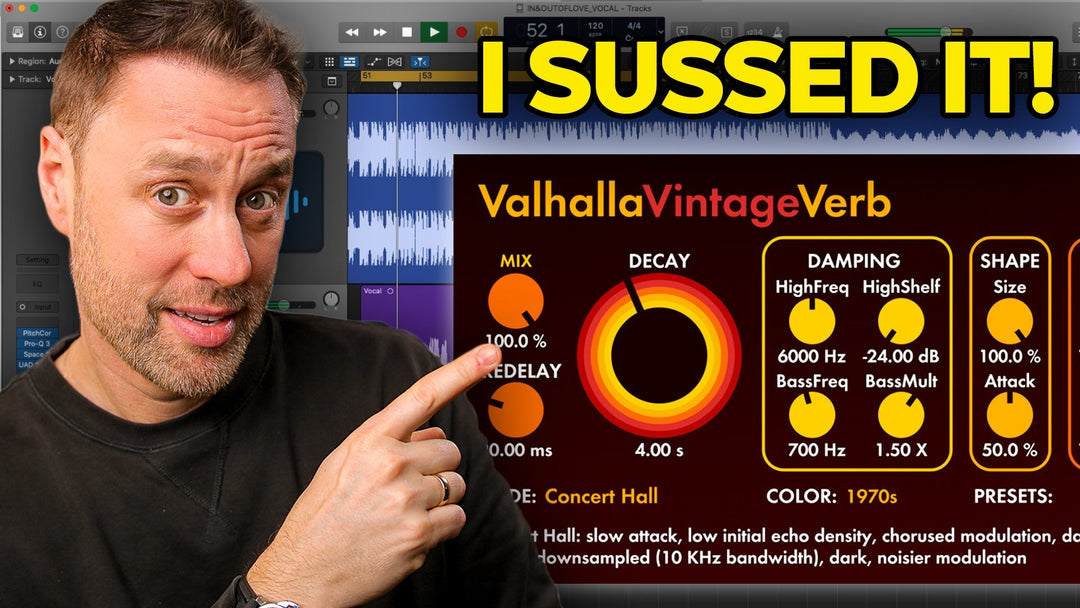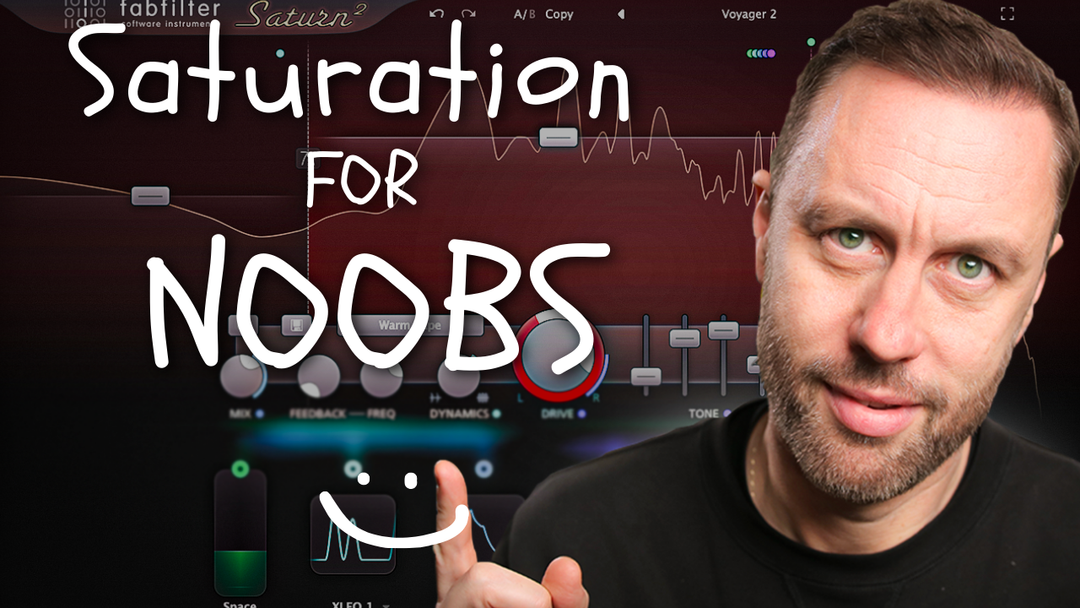This Is What Separates Pros from Amateurs

Most people think of sidechaining as one thing:
Kick hits → Bass ducks → Done.
But if that’s the only way you’re using sidechaining, you’re seriously missing out.
Today I’m going to show you how to use FabFilter Pro-Q 4 to take sidechaining way further — using EQ, not just compression. These are techniques that’ll clean up your mixes and make them sound more professional, without losing vibe or energy.
And yes — you can download all the presets I show in this tutorial for free. Just grab them at the top of the page.
What is Sidechaining?
In simple terms, sidechaining is when one sound controls the reaction of another.
Usually that means putting a compressor on your bass, triggered by the kick drum, so the bass ducks every time the kick hits. Classic move.
But with FabFilter Pro-Q 4, we can go a lot deeper.
Instead of ducking the entire volume, we can sidechain specific frequencies dynamically — meaning we only dip the parts of the sound that are clashing.
Even better, we can do this not just on instruments, but on effects returns like reverb and delay too.
Let’s dive into it.
Trick 1: Sidechain Reverb to Vocal for Huge Space Without Mud
You’ve got a lush reverb tail on your vocal — sounds great on its own.
But when the vocal comes in, it gets swallowed up in the reverb.
Here’s the fix:
-
Send the vocal to a 100% wet reverb bus.
-
Insert FabFilter Pro-Q 4 after the reverb.
-
Create a dynamic EQ band around 2–5kHz.
-
Sidechain it to the dry vocal.
✅ Now every time the vocal plays, it ducks the reverb just where it would clash — keeping the lead clear, while the reverb blooms naturally around it.
Tip on Attack and Release Times:
-
Attack: 20–30 ms
-
Release: 150–250 ms
Slowing them down keeps the ducking smooth and transparent.
Trick 2: Sidechain a Synth to the Vocal to Fix Midrange Masking
You’ve balanced the low end… but the mix still feels crowded.
What’s happening? The vocal and synth/pad are fighting for space in the mids.
Instead of turning the synth down (killing its energy) or compressing it (which sounds obvious), do this:
-
Insert Pro-Q 4 on the synth or pad.
-
Create a dynamic band around 1–3kHz.
-
Sidechain it to the lead vocal.
✅ Now, when the vocal plays, the synth ducks just in the frequencies that clash — leaving everything else intact.
Tip on Attack and Release Times:
-
Attack: 10–20 ms
-
Release: 100 ms
Keeps it subtle and musical.
Trick 3: Use Mid/Side EQ to Duck Backing Vocals Behind the Lead
Backing vocals can sound amazing — until they start clashing with the lead.
Rather than dipping all the backing vocals or using heavy compression, you can sidechain only the mid channel where the lead sits.
Here’s how:
-
Insert Pro-Q 4 on the backing vocal group.
-
Switch to Mid/Side mode.
-
Focus on the mid channel.
-
Create a dynamic band around 1.5–4kHz.
-
Sidechain it to the lead vocal.
✅ This ducks the centre of the backing vocals when the lead vocal is singing, but leaves the sides full and wide.
Result: Your lead vocal shines through naturally, and the backing vocals wrap around it without getting messy.
Tip on Attack and Release Times:
-
Attack: 15–20 ms
-
Release: 150–200 ms
Smooth and controlled.
Recap
We’re not just sidechaining volume anymore.
We’re sidechaining specific frequencies, effects returns, and even stereo fields — all dynamically and musically.
All inside FabFilter Pro-Q 4.
🎛 Want More?
If you want all my go-to FabFilter Pro-Q 4 presets for vocals, drums, synths, buses, and FX — Check out the full Pro-Q 4 Preset Pack and get your mixes sounding tighter and more professional today.




